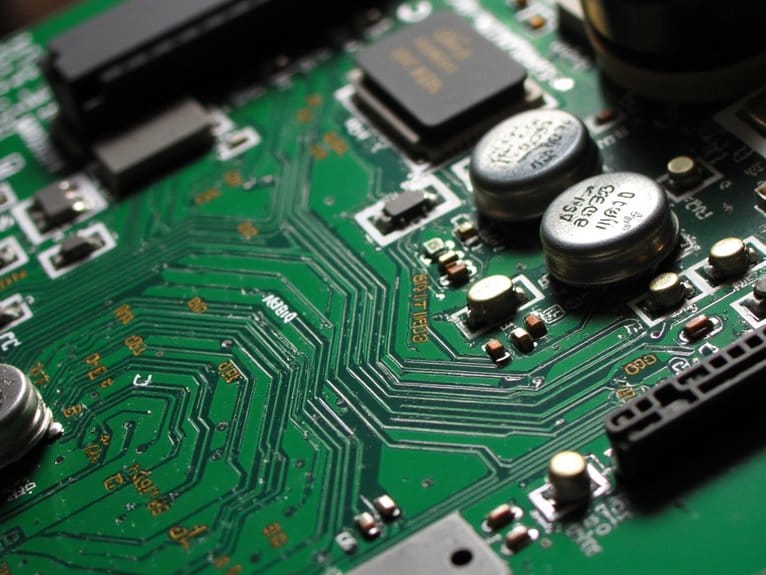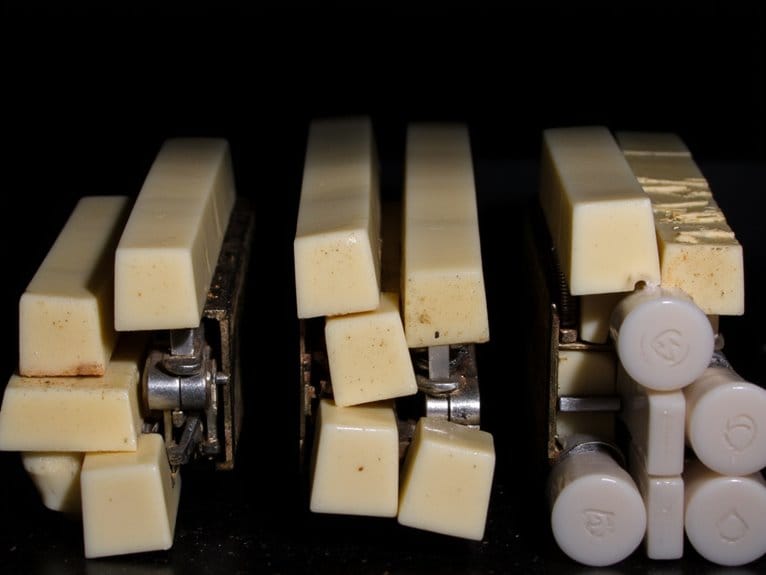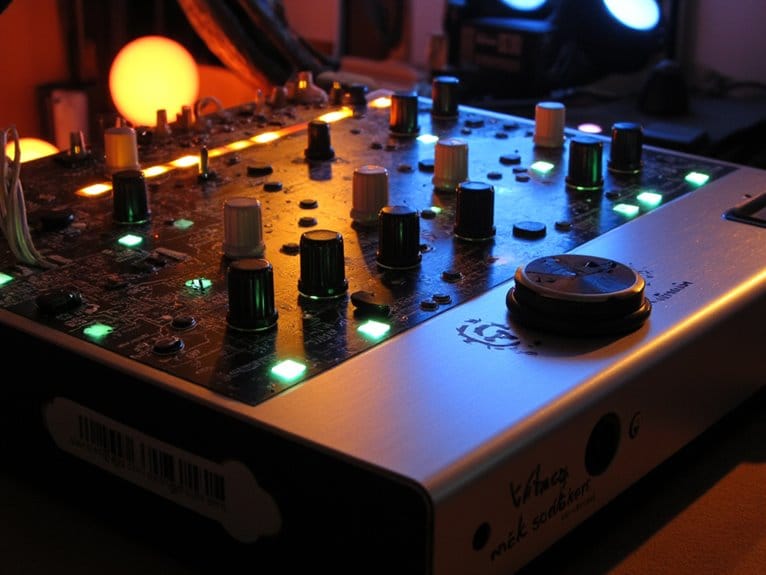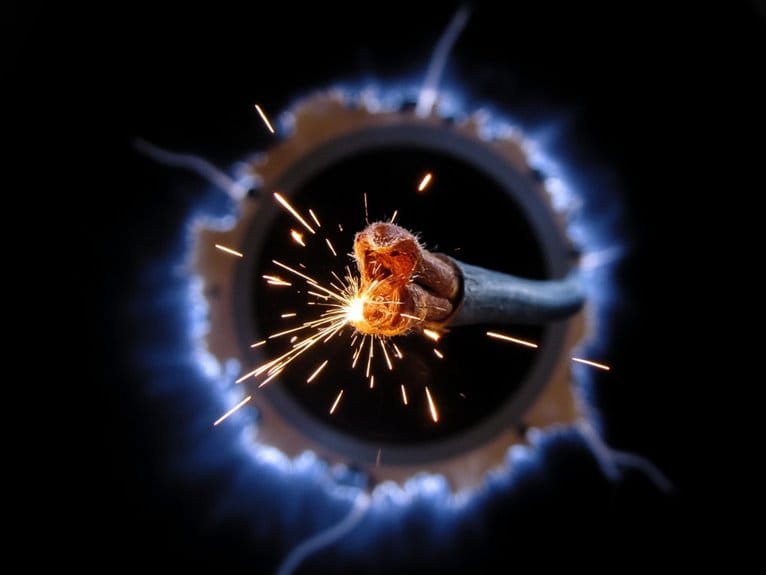Understanding Modular Synthesizers and Their Flexibility
You’ll find modular synthesizers offer unprecedented flexibility through their interconnected component system, where each module—oscillators, filters, amplifiers—serves distinct functions that you can reconfigure endlessly using patch cables. Unlike traditional synthesizers with fixed signal paths, modulars let you create custom routing between over 5,000 available Eurorack modules, using control voltage to modulate parameters like pitch and amplitude while building unique sonic signatures through your personal module choices and cable placements, transforming sound design from playing to instrument creation—and there’s much more to explore about this hands-on approach.
We are supported by our audience. When you purchase through links on our site, we may earn an affiliate commission, at no extra cost for you. Learn more.
Notable Insights
- Modular synthesizers feature interconnected components that can be limitlessly reconfigured, enabling custom signal flows and unique sound manipulation.
- Essential modules include oscillators for waveforms, filters for timbre shaping, and amplifiers with envelopes for dynamic volume control.
- The Eurorack format dominates with over 5,000 modules from 270+ manufacturers, using standardized 3U height and power connections.
- Systems continuously evolve according to user requirements, mixing vintage technologies with modern convenience through adapter modules.
- Signal routing uses CV for parameter modulation and gates for event triggers, enhanced by matrix routers and feedback loops.
What Are Modular Synthesizers and How Do They Work
Unlike the straightforward synthesizers you might find in a music store with their fixed layouts and predetermined signal paths, modular synthesizers represent a fundamentally different approach to electronic sound creation, one that’s built around the concept of interconnected components that you can reconfigure endlessly.
In modular synthesis, you’re working with separate modules—each serving distinct functions like generating oscillations, filtering frequencies, or controlling amplification—that connect through patch cables, creating custom signal flows for sound manipulation.
This flexibility means you can route a low-frequency oscillator to modulate filter cutoff while simultaneously using an envelope generator to control amplitude, crafting unique sonic textures that fixed-architecture synthesizers simply can’t achieve through their predetermined internal wiring. The Eurorack format has become the dominant standard since its establishment in 1996, now encompassing over 5,000 modules from more than 270 manufacturers worldwide.
The volts/octave system standardizes how control voltages relate to musical pitch across most modern modular synthesizers, ensuring compatibility between modules from different manufacturers.
Essential Modules That Create and Shape Your Sound
Now that we’ve established how modular synthesizers operate through their interconnected architecture, you’ll need to understand the core building blocks that actually generate and manipulate sound within your system.
Understanding the essential modules that form your modular synthesizer’s foundation is crucial for crafting compelling electronic music compositions.
These essential modules work together to create your sonic palette, each serving distinct but interconnected functions. This approach to synthesis using modular patches has experienced a remarkable resurgence in recent years among musicians and producers seeking more hands-on control over their sound creation.
The fundamental components include:
- Oscillators – Generate basic waveforms like sine, square, and sawtooth waves, with different oscillator types offering unique tonal characteristics and harmonic content.
- Filters – Shape your sound’s timbre by emphasizing or removing specific frequencies, with various filter characteristics determining how aggressively they affect your signal.
- Amplifiers and Envelopes – Control volume dynamics and temporal shaping, creating natural attack, decay, sustain, and release phases that make your patches feel alive and expressive.
Signal Routing and Control Voltage Systems
While oscillators and filters provide the raw materials for your sound, the real magic happens when you understand how to route signals between modules and harness control voltage to create dynamic, evolving patches.
Signal routing involves directing audio and CV signals through matrices, switches, and multiples, each offering distinct advantages for your patch architecture. CV fundamentals center on voltage variations that modulate parameters like pitch, filter cutoff, and amplitude, enabling those enchanting sound transformations you’re after.
Gates and triggers, specialized CV signals, initiate events like envelope attacks or sequencer steps. Matrix routers provide extensive signal management with LED displays, while switches offer instantaneous, discrete routing changes.
Feedback loops create complex interactions, and parallel processing builds rich textures that transform simple oscillator outputs into complex soundscapes. These semi-modular designs also provide educational value by allowing users to learn synthesis fundamentals through hands-on experimentation with signal flow and parameter control. Semi-modular synthesizers like the Behringer 2600 series offer up to 93 patch points for exploring these complex signal routing possibilities while maintaining basic functionality without patching.
Customization Possibilities That Set Modulars Apart
When I first encountered modular synthesizers, the sheer scope of customization possibilities felt overwhelming, yet that’s precisely what sets these instruments apart from their fixed-architecture counterparts.
You’re not limited to predetermined signal paths or factory-installed components, unlike traditional synthesizers where manufacturers decide your sonic destiny.
The customization extends far beyond simple module selection:
- Physical customization through handcrafted wooden cases, ergonomic rack arrangements, and module aesthetics that reflect your personal style
- Signal architecture flexibility using advanced patching techniques, bus systems, and unlimited cable routing for complex modulation networks
- Hybrid integration options combining hardware modules with software platforms, MIDI connectivity, and DAW interfaces for seamless workflow optimization
This modularity transforms synthesis from playing an instrument into designing one, where every patch cable placement and module choice shapes your unique sonic signature.
Popular Formats and Hardware Standards
When you’re ready to build your modular system, you’ll quickly discover that choosing the right format isn’t just about aesthetics—it’s about determining which ecosystem of modules, power requirements, and physical constraints will define your entire setup.
The Eurorack format dominates today’s market with its compact 3U height and standardized power connections, but legacy formats like Moog’s 5U systems offer larger controls and different sonic characteristics that many musicians still prefer.
I’ve found that understanding these rack sizing differences, from the dense efficiency of Eurorack’s horizontal pitch measurements to the spacious layouts of vintage formats, helps you make informed decisions about compatibility, available modules, and the tactile experience you want from your instrument. While modular systems offer unparalleled flexibility, many producers working within budget constraints find that multi-engine synthesizers under $1000 can provide similar sonic versatility through their combination of analog, digital, and hybrid synthesis methods.
Eurorack Standard Dominance
The Eurorack standard has become the undisputed king of modular synthesizers, and honestly, it’s not hard to see why once you plunge into what makes this format so compelling.
Since Doepfer established this unified format in the 1990s, it’s evolved into a massive ecosystem with over 15,000 module variations from 600+ manufacturers, creating unprecedented Eurorack advantages for musicians seeking customization.
The key Eurorack innovations that drive its dominance include:
- Universal compatibility – modules from boutique DIY builders work seamlessly alongside products from Moog, Roland, and other major manufacturers
- Compact efficiency – 3U height modules with standardized HP widths maximize functionality while maintaining portability
- Standardized power and signals – ±12V power rails and 1V/octave pitch control guarantee reliable cross-manufacturer integration
Legacy Format Differences
Before Eurorack claimed its throne, several competing modular formats carved out their own territories in the synthesizer landscape, each developing unique standards that still influence today’s music production. Legacy format evolution tells a fascinating story of how engineers tackled power requirements, connector types, and physical dimensions differently, creating distinct ecosystems that rarely played nice together.
| Format | Power Supply | Patch Cables |
|---|---|---|
| Moog/MOTM | +/-15V | 1/4″ TS |
| Frac Rack | +/-15V | 3.5mm TS |
| Buchla | Proprietary | Banana Plugs |
| Serge | Custom | 3.5mm TS |
Cross format compatibility remains challenging due to these fundamental differences, though modern adapter modules help bridge the gap, allowing you to mix vintage charm with contemporary convenience.
Rack Sizing Considerations
Although legacy formats established their own unique dimensions, understanding modern rack sizing becomes essential once you’re ready to build a system that’ll actually fit on your desk or in your studio rack.
I’ve learned that rack space calculations go far beyond simple height measurements, requiring careful consideration of width, depth, and mounting compatibility.
When planning your modular setup, you’ll need to account for these critical dimensions:
- Height standards: Eurorack uses 3U (5.25 inches), while Buchla employs 4U and classic Moog systems use 5U
- Width measurements: Horizontal pitch (HP) determines module capacity, with 1 HP equaling 0.2 inches
- Depth considerations: Modern surface-mount modules run shallower than older through-hole designs
Rail systems greatly impact compatibility between manufacturers, particularly affecting mounting security and case expandability across different modular formats.
Real-World Uses and Creative Communities
When you step into the world of modular synthesizers, you’re not just buying an instrument—you’re joining a vibrant ecosystem where sound designers craft alien landscapes for blockbuster films, electronic producers sculpt beats that couldn’t exist any other way, and experimental artists push the boundaries of what we consider music.
This community collaboration extends far beyond typical music-making, with online platforms fostering worldwide connections where artists share patching techniques, custom module designs, and sound exploration strategies that advance collective knowledge.
You’ll find modular synths processing guitars into unrecognizable textures, creating sci-fi sound effects through happy accidents, and integrating seamlessly with DAWs like Ableton Live.
The DIY culture encourages innovation through custom modifications, while workshops and events promote education within this thriving ecosystem.
Frequently Asked Questions
How Much Should I Budget for My First Modular Synthesizer System?
You should budget $600-$1,000 for your first modular synthesizer system. Budget considerations include allocating 30-40% for case/power, 40-50% for essential gear like oscillators, filters, and VCAs, plus 10-20% for accessories.
Can I Integrate My Modular Synth With My Existing DAW Setup?
You can absolutely integrate your modular synth with your DAW setup through various sync capabilities and audio routing methods. From basic clock synchronization to MIDI-to-CV conversion and DC-coupled audio interfaces, integration options suit different workflows.
Which Modules Should Beginners Prioritize When Starting Their First Rack?
You’ll want essential modules first: oscillator for sound generation, envelope generator for dynamics, VCA for amplitude control, and filter for tone shaping. Add a patch bay for organized connections and easier experimentation.
On a final note
You’ve now got the foundation to immerse yourself in modular synthesis, though I’ll admit the learning curve can feel steep at first. Your journey will involve constant experimentation with signal paths, voltage control relationships, and module combinations that’ll reshape how you think about sound creation. The modular community’s incredibly welcoming, so don’t hesitate to ask questions, share patches, and explore the endless creative possibilities ahead.







